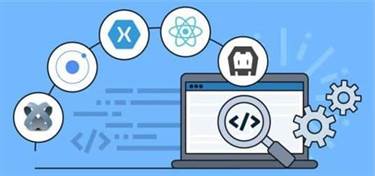Machine Learning: What It is, Tutorial, Definition, Types
Artificial neural networks have been used on a variety of tasks, including computer vision, speech recognition, machine translation, social network filtering, playing board and video games and medical diagnosis. The discipline of machine learning employs various approaches to teach computers to accomplish tasks where no fully satisfactory algorithm is available. In cases where vast numbers of potential answers exist, one approach is to label some of the correct answers as valid. This can then be used as training data for the computer to improve the algorithm it uses to determine correct answers. For example, to train a system for the task of digital character recognition, the MNIST dataset of handwritten digits has often been used.
This technique allows reconstruction of the inputs coming from the unknown data-generating distribution, while not being necessarily faithful to configurations that are implausible under that distribution. This replaces manual feature engineering, and allows a machine to both learn the features and use them to perform a specific task. In this sense, machine learning models strive to require as little human intervention as possible. After a data scientist designs machine learning algorithms, the computer/machine should carry out the learning process by itself, which can be realized in several different ways.
Learning from the training set
It is a rapidly growing field with wide-ranging applications in many different industries, from healthcare and finance to transportation and manufacturing. It is also likely that machine learning will continue to advance and improve, with researchers developing new algorithms and techniques to make machine learning more powerful and effective. There are a variety of machine learning algorithms available and it is very difficult and time consuming to select the most appropriate one for the problem at hand. Firstly, they can be grouped based on their learning pattern and secondly by their similarity in their function. Reinforcement machine learning is a machine learning model that is similar to supervised learning, but the algorithm isn’t trained using sample data. A sequence of successful outcomes will be reinforced to develop the best recommendation or policy for a given problem.
Machine Learning is, undoubtedly, one of the most exciting subsets of Artificial Intelligence. It completes the task of learning from data with specific inputs to the machine. It’s important to understand what makes Machine Learning work and, thus, how it can be used in the future. In some cases, machine learning can gain insight or automate decision-making in cases where humans would not be able to, Madry said. “It may not only be more efficient and less costly to have an algorithm do this, but sometimes humans just literally are not able to do it,” he said. The goal of AI is to create computer models that exhibit “intelligent behaviors” like humans, according to Boris Katz, a principal research scientist and head of the InfoLab Group at CSAIL.
Sharing the data output
Artificial neurons may have a threshold such that the signal is only sent if the aggregate signal crosses that threshold. Different layers may perform different kinds of transformations on their inputs. Signals travel from the first ai development software layer to the last layer , possibly after traversing the layers multiple times. Supervised anomaly detection techniques require a data set that has been labeled as “normal” and “abnormal” and involves training a classifier .

Machine learning is an application of artificial intelligence that uses statistical techniques to enable computers to learn and make decisions without being explicitly programmed. It is predicated on the notion that computers can learn from data, spot patterns, and make judgments with little assistance from humans. Supply chain management uses data-based predictions to help organizations forecast the amount of inventory to stock and where it should be along the supply chain.
The definitions of machine learning, AI, and deep learning
These enormous data needs used to be the reason why ANN algorithms weren’t considered to be the optimal solution to all problems in the past. However, for many applications, this need for data can now be satisfied by using pre-trained models. In case you want https://globalcloudteam.com/ to dig deeper, we recently published an article on transfer learning. This means that the prediction is not accurate and we must use the gradient descent method to find a new weight value that causes the neural network to make the correct prediction.

Robotics, gaming, and autonomous driving are a few of the fields that use reinforcement learning. For instance, IBM’s Watson platform can determine shipping container damage. Watson combines visual and systems-based data to track, report and make recommendations in real-time. The benefits of predictive maintenance extend to inventory control and management. Avoiding unplanned equipment downtime by implementing predictive maintenance helps organizations more accurately predict the need for spare parts and repairs—significantly reducing capital and operating expenses.
How does Machine Learning Work?
In 2018, a self-driving car from Uber failed to detect a pedestrian, who was killed after a collision. Attempts to use machine learning in healthcare with the IBM Watson system failed to deliver even after years of time and billions of dollars invested. The data lakehouse vendor’s purchase of the generative AI vendor will enable customers to build and train language models …
These artificial neurons loosely model the biological neurons of our brain. A deep neural network can “think” better when it has this level of context. For example, a maps app powered by an RNN can “remember” when traffic tends to get worse. It can then use this knowledge to recommend an alternate route when you’re about to get caught in rush-hour traffic.
Training models
Today, machine learning enables data scientists to use clustering and classification algorithms to group customers into personas based on specific variations. These personas consider customer differences across multiple dimensions such as demographics, browsing behavior, and affinity. Connecting these traits to patterns of purchasing behavior enables data-savvy companies to roll out highly personalized marketing campaigns that are more effective at boosting sales than generalized campaigns are. When getting started with machine learning, developers will rely on their knowledge of statistics, probability, and calculus to most successfully create models that learn over time.
- Generalization in this context is the ability of a learning machine to perform accurately on new, unseen examples/tasks after having experienced a learning data set.
- Unlike supervised learning, reinforcement learning lacks labeled data, and the agents learn via experiences only.
- What are some concrete ways in which machine learning and AI optimize industrial operations?
- For example, they can consider variations in the point of view, illumination, scale, or volume of clutter in the image and offset these issues to deliver the most relevant, high-quality insights.
- Connecting these traits to patterns of purchasing behavior enables data-savvy companies to roll out highly personalized marketing campaigns that are more effective at boosting sales than generalized campaigns are.
